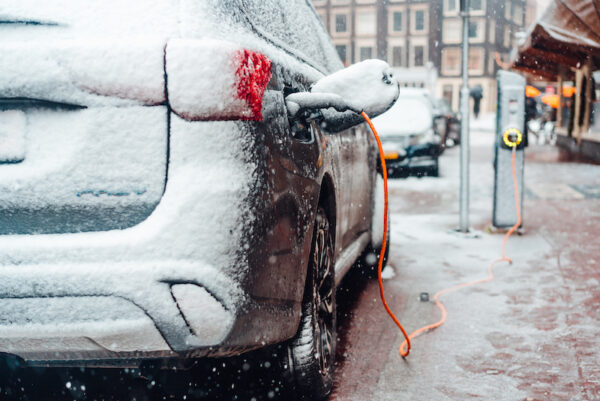WRITTEN BY LINNEA LUEKEN,
A recent post by Canada’s The Globe and Mail discusses the difficulties electric vehicle (EVs) drivers have experienced in extremely cold weather.
The Globe and Mail’s story is a cautionary tale for people who live in some of the northmost regions of the world and regularly experience extreme cold. [emphasis, links added]
EVs, because they rely on batteries, struggle in the cold, with large declines in range and towing capabilities, which are often needed in the northern expanses.
In the article, “In northern Norway’s bitter cold, the durability of electric vehicles is put to the test,” Norwegian journalist Nathan Vanderklippe reports on recent cold-weather tests of EVs in the Lapland Proving Ground. After a night of -40°C, three of five cars wouldn’t start.
While not exactly an anti-EV article, it does describe some of the dangers people in the far north face with vehicles that are less reliable in the cold.
Vanderklippe interviewed an ambulance driver from Hesseng, whose “coverage area extends to Bugøynes, a drive of nearly 100 kilometers.” The ambulance driver reports that he does not trust current EVs to get the job done.
A taxi driver reports leaving his one fleet EV in storage over the coldest parts of the winter, and a hunter scoffs at the “stupidity” of mandating the end of combustion engines.
Vanderklippe writes that many people in northern Norway, especially those who live in remote homesteads, tow snowmobiles with them in case they are needed, “and towing can cut an electric vehicle’s range in half, especially in a region where distances are immense.”
Some EV models are reportedly better in the cold than others, but all suffer from decreased range and longer charging times.
Tesla, marketed as a cold-weather friendly model in South Korea, was recently fined by the government for exaggerating the wintertime range of their cars when testing and experience showed the vehicles’ range dropped far faster and steeper than what Tesla claimed in its advertisements.
In Juneau, Alaska, the city’s first electric public bus could not hold a battery charge long enough to finish its route on cold days and required a heated garage.
Winter is tough on any battery, and increased demand for home heating also puts strain on the electric grid.
This is true in the summer as well, as Californians found out from a Flex notification from the California Independent System Operator (CAISO) last summer, covered by Climate Realism here.
Californians were informed that they should not charge their EVs during heat waves, because it will overload the grid as expected air conditioning use rises.
CAISO told utility customers:
“…grid operators again ask the public to conserve electricity to help balance supply and demand on the grid and avoid service disruptions due to extreme heat across much of the Southwest.”
…
“Pre-charge electronic devices · Close window coverings to keep your home or apartment cool · Pre-charge electric vehicles”
While some EVs do fine when a home can place the car in a heated garage, or a more expensive model EV with battery-heating technology is used, this won’t work for everyone in places where even gasoline cars can struggle.
Both extreme cold and extreme heat can drain batteries quickly, making locations with extended periods of very cold or hot temperatures less than ideal for EV use.
Long distances between population centers, harsh subzero temperatures, and suboptimal road conditions all make EVs less appealing.
Political mandates that stop the sale of combustion engine vehicles in these parts of the world before EV technologies have improved may not just be inconvenient or expensive but may be deadly.
The Globe and Mail is right to point out these weaknesses in EVs, instead of merely flattering EV manufacturers and virtue signaling for climate alarmists.
Source: https://climatechangedispatch.com
Disclaimer: We at Prepare for Change (PFC) bring you information that is not offered by the mainstream news, and therefore may seem controversial. The opinions, views, statements, and/or information we present are not necessarily promoted, endorsed, espoused, or agreed to by Prepare for Change, its leadership Council, members, those who work with PFC, or those who read its content. However, they are hopefully provocative. Please use discernment! Use logical thinking, your own intuition and your own connection with Source, Spirit and Natural Laws to help you determine what is true and what is not. By sharing information and seeding dialogue, it is our goal to raise consciousness and awareness of higher truths to free us from enslavement of the matrix in this material realm.
 EN
EN FR
FR


























